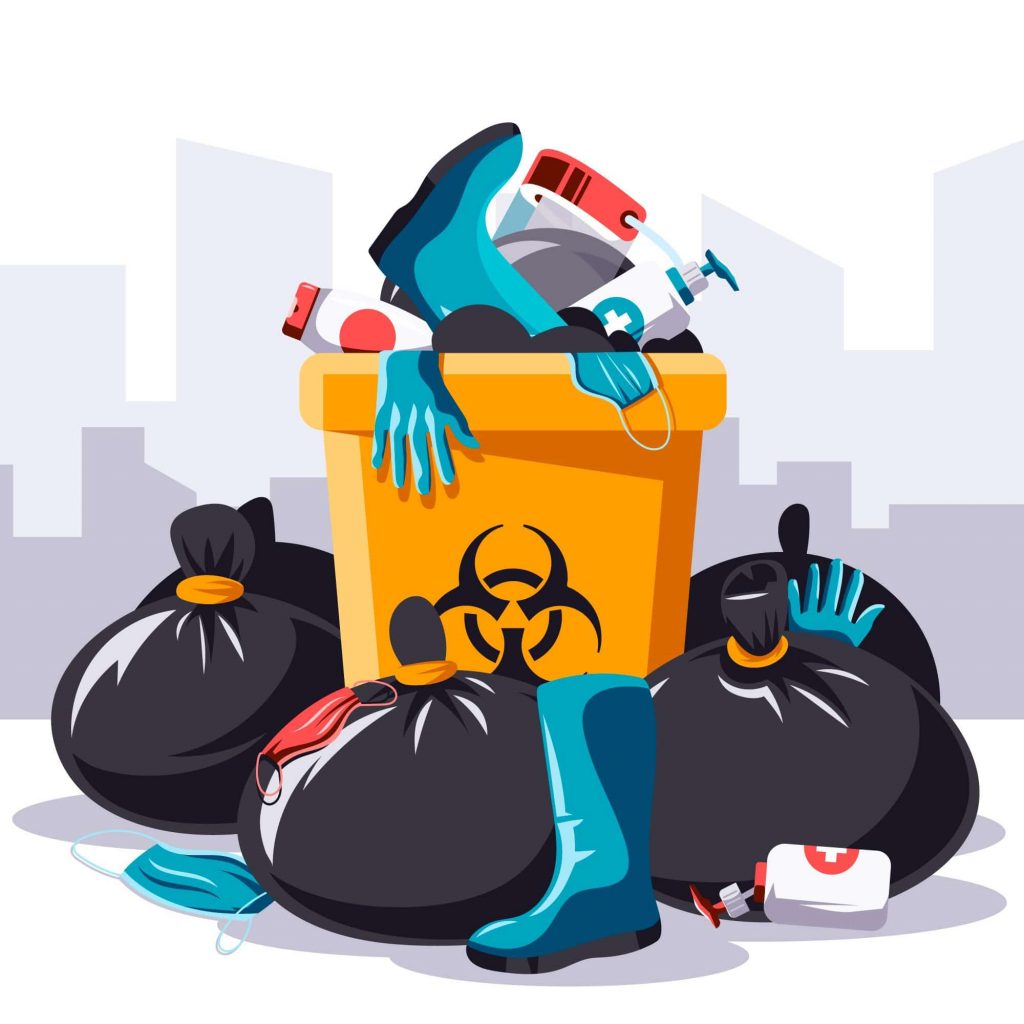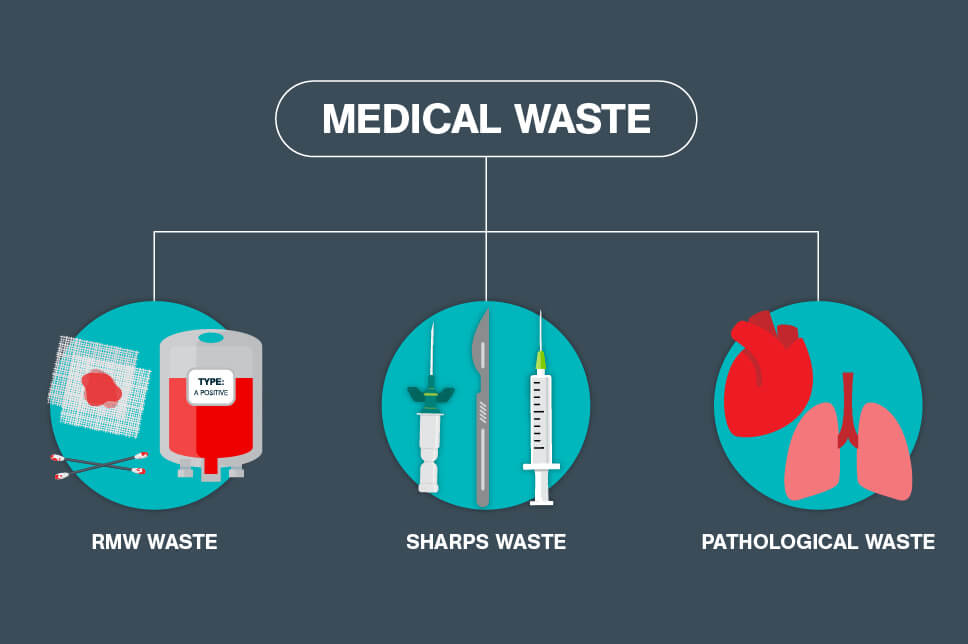Compliance and Rules for Medical Waste Disposal
Conformity and guidelines for medical garbage disposal play a critical function in ensuring the safety and security and wellness of both medical care experts and the general public. Correct administration of clinical waste is necessary to avoid the spread of infections, protect the atmosphere, and maintain public wellness. This needs adherence to specific standards and procedures set forth by regulative agencies and bodies. These regulations incorporate numerous elements, consisting of the category and partition of medical waste, correct storage space and taking care of treatments, along with transportation and disposal methods. By complying with these policies, healthcare centers can lessen the danger of contamination and potential harm to people and the environment. This write-up will certainly explore the importance of conformity and offer an introduction of the essential laws governing clinical waste disposal.
Significance of Compliance
The significance of conformity with regulations for clinical garbage disposal can not be overemphasized. Proper disposal of medical waste is crucial for making sure the safety and security and well-being of health care employees, patients, and the public. Clinical waste, which consists of things such as used needles, polluted handwear covers, and biomedical waste, can posture severe health and wellness risks otherwise managed and thrown away appropriately.
Compliance with regulations makes certain that medical waste is taken care of in a manner that decreases the possibility for direct exposure to unsafe materials and infectious diseases - medical waste removal service. It assists avoid the spread of infections, such as HIV, hepatitis B and C, and various other bloodborne microorganisms. Conformity likewise plays an important duty in safeguarding the setting by protecting against contamination of water sources, dirt, and air
Failure to abide by laws can lead to extreme repercussions for healthcare centers, including penalties, lawsuit, and damages to their credibility. Additionally, non-compliance might compromise the health and wellness of medical care workers, patients, and the area.
Compliance with policies for medical garbage disposal calls for adherence to certain guidelines and methods. These might include correct segregation, product packaging, labeling, and storage space of medical waste. It also involves using accepted disposal approaches, such as autoclaving, landfilling, or incineration, relying on the kind of waste.
Regulatory Agencies and Bodies
Regulative agencies and bodies play a crucial duty in looking after compliance with policies for clinical garbage disposal. These organizations are responsible for establishing guidelines, methods, and standards to ensure the risk-free and correct handling of medical waste. They keep an eye on and enforce conformity to safeguard public wellness and the environment.
One of one of the most popular regulative firms in the United States is the Epa (EPA) The EPA is in charge of controling the storage space, transport, treatment, and disposal of medical waste. They develop guidelines for waste generators, transporters, and treatment centers to follow, making sure that all essential precautions are taken to prevent the spread of illness and contamination.
One more vital governing body is the Occupational Security and Wellness Administration (OSHA) OSHA establishes laws and requirements to secure employees from occupational hazards, consisting of those pertaining to clinical waste. WasteX Medical Waste Disposal. They provide standards for the safe handling and disposal of clinical waste to secure employees in healthcare centers
In enhancement to these federal agencies, individual states likewise have their own governing bodies that look after medical garbage disposal. These agencies may have their very own particular guidelines and requirements that need to be adhered to.

Classification and Partition of Clinical Waste
To make sure correct management of medical waste, it is important to categorize and segregate it according to developed procedures and guidelines. medical waste disposal. Category and partition play an essential function in decreasing the risk of infection, safeguarding the setting, and ensuring the security of health care employees and the public
Medical waste is categorized into various groups based upon its potential risk level. These classifications consist of infectious waste, pathological waste, sharps waste, pharmaceutical waste, chemical waste, and radioactive waste. Each group requires particular handling, storage, disposal, and transport methods to reduce the threat of direct exposure and contamination.
Segregation of clinical waste includes dividing different kinds of waste at the source. This process ensures that waste with various danger levels is not combined, decreasing the capacity for cross-contamination and making disposal treatments more effective. Appropriate partition is achieved with making use of color-coded containers and tags, which aid medical care workers and waste management personnel take care of each kind and identify of waste appropriately.
In enhancement to category and segregation, healthcare centers must additionally stick to regional, state, and federal regulations regarding medical waste management. These laws lay out certain demands for storage, transport, therapy, and final disposal of medical waste, making certain compliance and maintaining public health and safety.
Correct Storage Space and Dealing With Procedures
Correct storage and handling treatments play a vital function in making sure the certified and secure administration of medical waste. Clinical waste, that includes products such as used syringes, infected handwear covers, and expired medications, can pose significant health and wellness and environmental threats otherwise dealt with correctly. It is important for medical care centers and various other generators of clinical waste to carry out stringent storage space and handling methods.
To start with, clinical waste should be kept in sturdy, leak-proof containers that are especially designed for this objective. These containers need to be identified with the global biohazard symbol and the words "medical waste" to plainly suggest the contents. Additionally, the containers should be kept firmly near stop any prospective leak or spillage.
Additionally, it is essential to segregate different sorts of clinical waste to prevent cross-contamination. Sharps, such as scalpels and needles, need to be stored in puncture-resistant containers to lessen the risk of injuries - WasteX Medical Waste Disposal. Chemical waste, such as anti-bacterials and solvents, ought to be kept independently from various other sorts of medical waste to stop dangerous exposures or chemical reactions

Transport and Disposal Approaches
Medical care centers should guarantee the safe transport and correct disposal of their clinical waste to adhere to regulations and protect public health. Transport and disposal approaches play a critical role in stopping the spread of contagious diseases and decreasing the environmental impact of clinical waste.
To carry medical waste, medical care centers should make use of puncture-resistant and watertight containers that are identified with the biohazard symbol. These containers need to be safely sealed to stop any type of leakage during transport. Furthermore, healthcare centers ought to develop procedures for the transportation procedure, including the use of dedicated vehicles and experienced workers.
Once the clinical waste gets to the disposal center, it goes through numerous approaches of more tips here therapy - WasteX Medical Waste Disposal. One usual technique is incineration, which entails burning the waste at high temperatures to damage microorganisms and reduce the quantity of waste.
It is essential for medical care centers to deal with accredited and allowed waste monitoring business to make certain correct transport and disposal of medical waste. These business have the experience and sources to handle medical waste safely and in conformity with laws.
Verdict
To conclude, conformity with regulations for medical garbage disposal is of utmost relevance to make certain public wellness and security. Governing companies and bodies play an important role in applying these laws. Proper category and segregation of medical waste, along with adhering to suitable storage space and dealing with procedures, are vital to avoid contamination and the spread of diseases. Ample transportation and disposal methods should be executed to decrease environmental impacts. On the whole, adherence to compliance and regulations is needed to efficiently take care of medical waste.
Clinical waste, which includes products such as made use of needles, polluted handwear covers, and biomedical waste, can position significant health threats if not managed and disposed of correctly.
These groups consist of contagious waste, pathological waste, sharps waste, pharmaceutical waste, chemical waste, and contaminated waste.Partition of medical waste includes dividing different types of waste at the resource. Correct segregation is accomplished via the use of color-coded containers and labels, which help healthcare workers and waste administration workers identify and handle each type of waste correctly.
Chemical waste, such as disinfectants and solvents, should be stored individually from other kinds of clinical waste to prevent chemical reactions or harmful direct exposures.